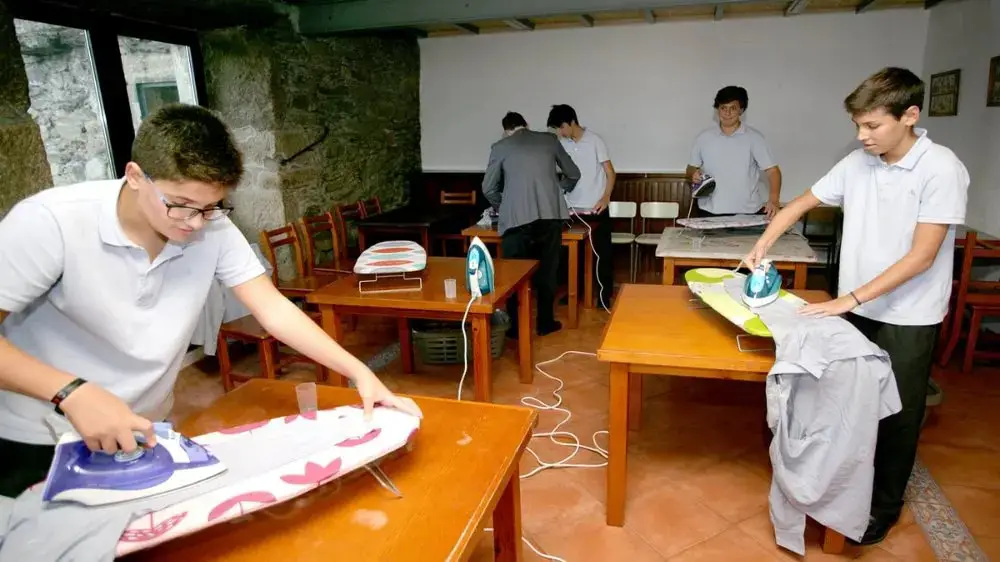Gender stereotypes infiltrate every facet of our lives, including education, where the implications are significant. The realm of home economics education has also been influenced by traditional gender roles. While the field has evolved, remnants of these stereotypes persist in its curriculum, materials, and classroom dynamics.
Examining the juncture of gender stereotypes, education, and health reveals a complex interplay shaping identity and health outcomes. Scrutinizing the subtle yet potent ways these stereotypes mold perceptions and decisions, we aim to spotlight their impact on physical and mental well-being.
Gender Stereotyping in Home Economics Education
Home economics education, despite evolving beyond its traditional boundaries, remains shadowed by enduring gender stereotypes. These stereotypes, often perpetuated through educational materials and classroom practices, reinforce antiquated notions of gender roles and responsibilities. The historical division of subjects, wherein certain disciplines are associated with one gender, has subtly persisted in shaping home economics education.
Within this context, gender biases become apparent in the way curricula are designed and presented. Commonly, domestic skills are associated with femininity, while broader life skills like finance management are seen as more aligned with masculinity. These biases hinder the holistic development of students, limiting their skill sets and reinforcing outdated societal expectations.
Addressing gender stereotypes in home economics education necessitates acknowledging their existence within curricular materials and classroom dynamics. By recognizing these biases, educators can take proactive steps to challenge and dismantle them, promoting a more inclusive and balanced educational experience for all students.
Challenges Faced by Different Genders in Home Economics Education
Despite progress, Home Economics classes still present unique challenges for male and non-binary students due to societal expectations and deeply ingrained gender norms.
1. Barriers Faced by Male and Non-Binary Students
In Home Economics classrooms, some people still hold onto the outdated belief that these subjects are solely for girls, perpetuating the notion that certain domestic tasks are gender-specific.
This misconception creates an unwelcoming atmosphere for male and non-binary students, leading to bullying or feeling out of place. The pressure to fit into traditional gender roles can make it difficult for them to freely explore their interests in these areas. [1]
2. Societal Pressure to Conform
Both inside and outside the classroom, students are under pressure to conform to gender norms. Boys who show an interest in Home Economics might face ridicule from peers or adults who consider it unmanly. Similarly, non-binary students may struggle to find acceptance in a binary-gendered environment, leading to feelings of isolation and discouragement. [2]
3. Lack of Representation and Role Models
Seeing someone like oneself excelling in a field can be a powerful motivator. Unfortunately, Home Economics often lacks representation and role models for male and non-binary students. This absence can make it harder for them to envision themselves thriving in these classes, limiting their sense of belonging and self-efficacy. [3]
A School’s Quest to Challenge Gender Stereotypes
The Montecastelo School in Spain, guided by Gabriel Bravo, stands out for its progressive stance against traditional gender roles. With the motto “Equality is learned with actions,” the school actively challenges gender stereotypes and promotes balanced development.
Central to this effort is the school’s approach to teaching boys vital life skills and independence. Rejecting the notion that household tasks are exclusive to women, the school introduced ironing, sewing, and cooking classes to the curriculum for boys. These practical skills, alongside traditionally male-oriented subjects like masonry and carpentry, provide a well-rounded education that breaks away from gender norms.
Implemented in 2018, the classes are taught by volunteers, including the fathers of students. Economics professor Andrès Luna, who teaches ironing, advocates for gender-neutral teaching methods. The curriculum not only imparts practical skills but also fosters lessons on gender equality and self-reliance.
The Montecastelo School’s approach serves as a commendable model for challenging stereotypes and fostering a more equitable generation. [4,5]

Promoting Gender Equity in Home Economics Education
To create an inclusive and supportive Home Economics education, thoughtful strategies are needed to break free from traditional constraints and foster an environment where all students can explore their interests freely.
1. Embracing Inclusive Teaching Approaches
Catering to the diverse needs and interests of all students is crucial. Educators can encourage open discussions, allowing students to share their perspectives and experiences without judgment. By valuing each student’s contributions, teachers create an environment where everyone feels heard and respected.
2. Updating the Curriculum to Reflect Contemporary Gender Dynamics
Home Economics curricula must evolve to mirror the realities of modern gender dynamics. Instead of reinforcing traditional gender roles, updated programs should emphasize essential life skills that apply to all individuals, regardless of gender. By breaking away from stereotypes, the curriculum becomes more relevant and appealing to a wider audience.
3. Highlighting Successful Gender Equity Initiatives
Showcasing successful initiatives and programs that promote gender equity in Home Economics Education can inspire other schools and educators. These initiatives might include mentorship programs that provide students with diverse role models or workshops that challenge gender norms in household tasks. By celebrating these achievements, we encourage more institutions to follow suit and create inclusive learning environments.
Implications of Gender Stereotypes on Health and Well-Being
Gender stereotypes woven into education cast substantial implications on individuals’ health and well-being. These implications span both mental and physical dimensions, shaping attitudes, behaviors, and overall quality of life.
Mental Well-Being
- Self-Esteem and Body Image: Conforming to prescribed gender roles can erode self-esteem and trigger body image issues. Unrealistic expectations tied to appearance or behaviors can contribute to emotional distress. [6]
- Career Prospects: The perpetuation of gendered career stereotypes within education fuels stress and anxiety. People confined to predetermined career paths based on gender norms may experience dissatisfaction, affecting overall mental well-being. [6]
- Limited Aspirations: Confining skills within traditional gender boundaries limits personal growth and aspirations, causing frustration and disillusionment among individuals who wish to explore a broader range of interests. [7
Physical Health Consequences
- Imbalanced Skill Development: The division of skills into gender-specific domains impedes a balanced development of essential life skills. This imbalance can lead to challenges in maintaining a healthy lifestyle.
- Nutritional Choices: Gendered norms around food and cooking influence dietary choices. Biased perceptions of “men’s” and “women’s” foods can result in inadequate nutrition and health issues. [8]
- Limited Skill Set: The lack of exposure to a diverse range of skills restricts the acquisition of competencies needed for independent living. This can lead to challenges in managing day-to-day tasks critical for well-being.

My Personal RX
In the realm of health and nutrition, it’s commonly understood that men’s and women’s nutritional needs can vary due to factors such as metabolism, hormonal differences, and physiological requirements. However, it’s important to recognize that these needs are not solely determined by gender.
Each individual’s nutritional needs are influenced by a myriad of factors, including genetics, age, activity level, and overall health goals. While recognizing the nuances that may exist, it’s crucial not to be limited by gender stereotypes when considering health and nutrition.
Here are my holistic health recommendations that apply to all individuals, regardless of gender:
- Diversify Diet: Opt for a diverse and colorful diet that includes a wide range of fruits, vegetables, whole grains, lean proteins, and healthy fats. By incorporating a variety of nutrient-rich foods, you can provide your body with the essential vitamins, minerals, and antioxidants it needs.
- Listen to Your Body: Pay attention to your body’s signals of hunger, fullness, and specific food cravings. Respect your body’s cues and cultivate a mindful eating approach that allows you to nourish yourself intuitively.
- Move and Thrive: Engage in regular physical activity that you genuinely enjoy. Whether it’s through cardio workouts, strength training, yoga, or other forms of exercise, staying active supports not only your physical health but also your mental and emotional well-being.
- Embrace Holistic Wellness: For a holistic approach to health transformation that goes beyond gender boundaries, my free 50-page Protocol offers a comprehensive pathway. This protocol focuses on optimizing your health and well-being, recognizing the uniqueness of each individual.
- Elevate with Super Greens: Enhance your nutritional intake with Super Greens, a powdered supplement designed to deliver the benefits of a wide range of superfoods. This convenient option can help supplement your diet with an array of nutrients.
While understanding that nutritional needs can vary, it’s important to embrace an individualized approach to health and nutrition. Let’s break free from gender stereotypes and recognize the complexity of factors influencing our well-being. Together, we can embark on a journey of holistic health that is both empowering and inclusive.

Sources:
- Thoreson, R. (2023). “Like walking through a hailstorm.” In Human Rights Watch. https://www.hrw.org/report/2016/12/07/walking-through-hailstorm/discrimination-against-lgbt-youth-us-schools
- Paechter, C., Toft, A., & Carlile, A. (2021). Non-binary young people and schools: pedagogical insights from a small-scale interview study. Pedagogy, Culture and Society, 29(5), 695–713. https://doi.org/10.1080/14681366.2021.1912160
- Dixon, R. A. (2016). Imagining the future of home economics in New Zealand. The University of Canterbury. https://ir.canterbury.ac.nz/server/api/core/bitstreams/519ee966-93c9-4848-969a-68387e40c4a0/content
- Scrivens, L. (2020, June 9). School smashes gender stereotypes by teaching boys sewing and ironing. Newsner Stories EN. https://en.stories.newsner.com/news/school-smashes-gender-stereotypes-by-teaching-boys-sewing-and-ironing/
- School in Spain teaches students to cook and iron clothes. They’re preparing them for the future. (2022, September 30). Upsocl. https://www.upsocl.com/positive/school-in-spain-teaches-students-to-cook-and-iron-clothes-theyre-preparing-them-for-the-future/
- Natanson, H. (2023, April 12). Trans kids feel unsafe and stressed at school. This study shows why. Washington Post. https://www.washingtonpost.com/education/interactive/2023/trans-kids-school-stress/
- Green, A., & Green, A. (2021, December 2). A Man’s World? Gender stereotypes and underrepresentation of women in textbooks. EVN Report. https://evnreport.com/raw-unfiltered/a-man-s-world-gender-stereotypes-and-underrepresentation-of-women-in-textbooks/
- Zhao, Y. (2022, December). Analysis of the Gender Stereotypes on Food Preferences. In 2022 6th International Seminar on Education, Management and Social Sciences (ISEMSS 2022) (pp. 3688-3693). Atlantis Press. https://www.atlantis-press.com/proceedings/isemss-22/125982121



















